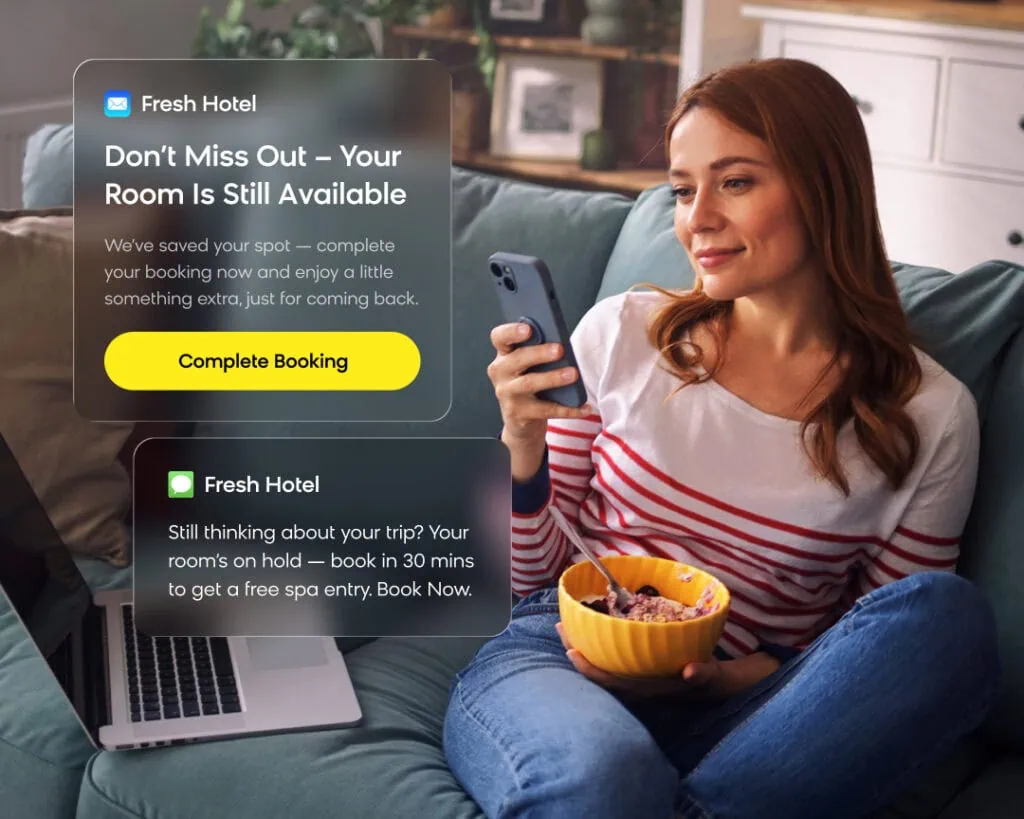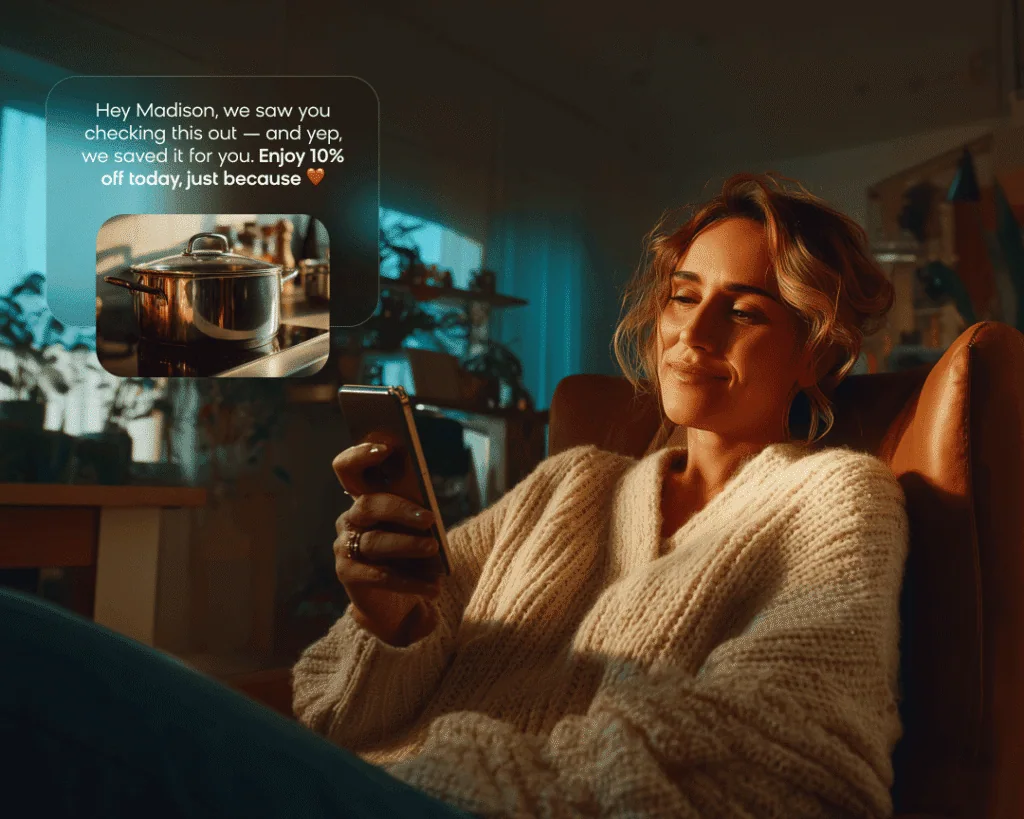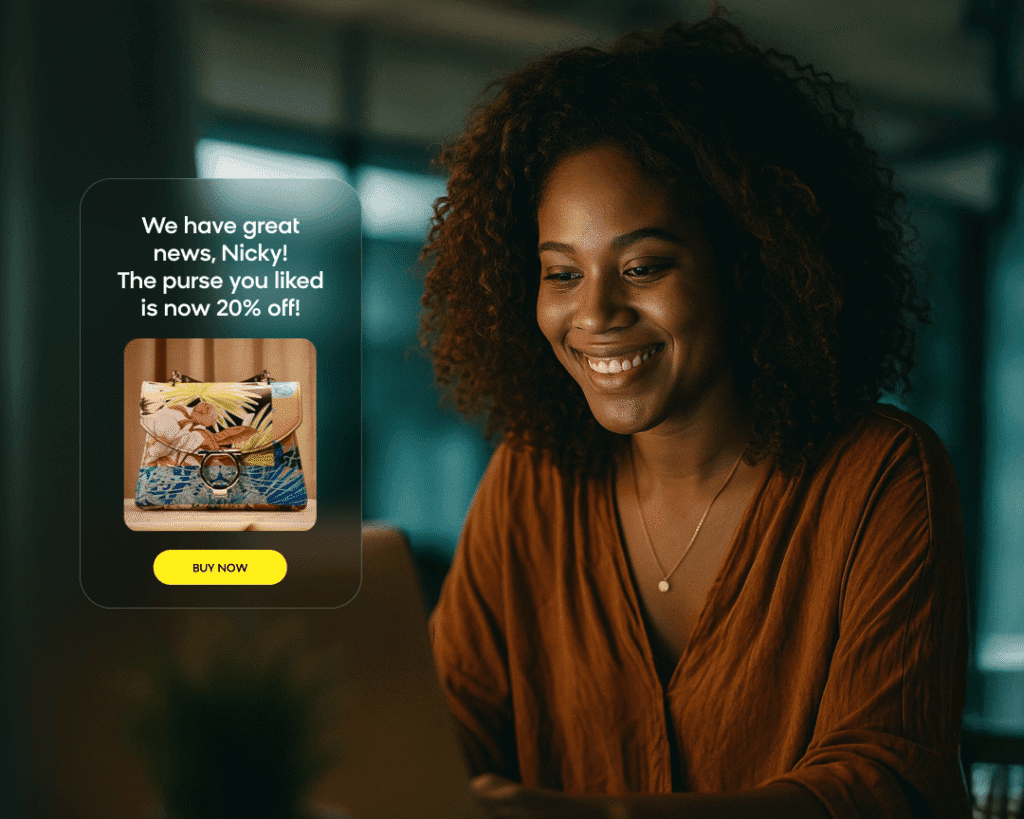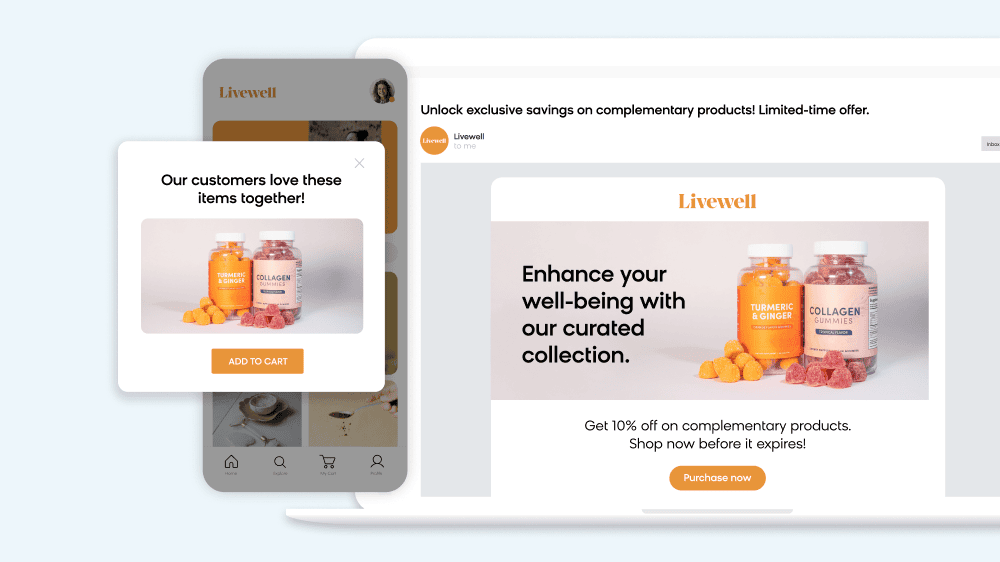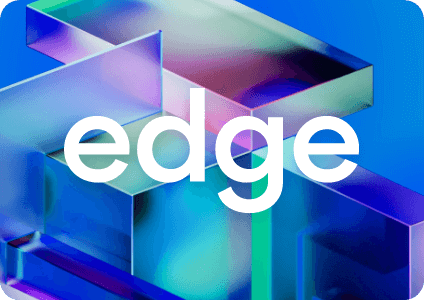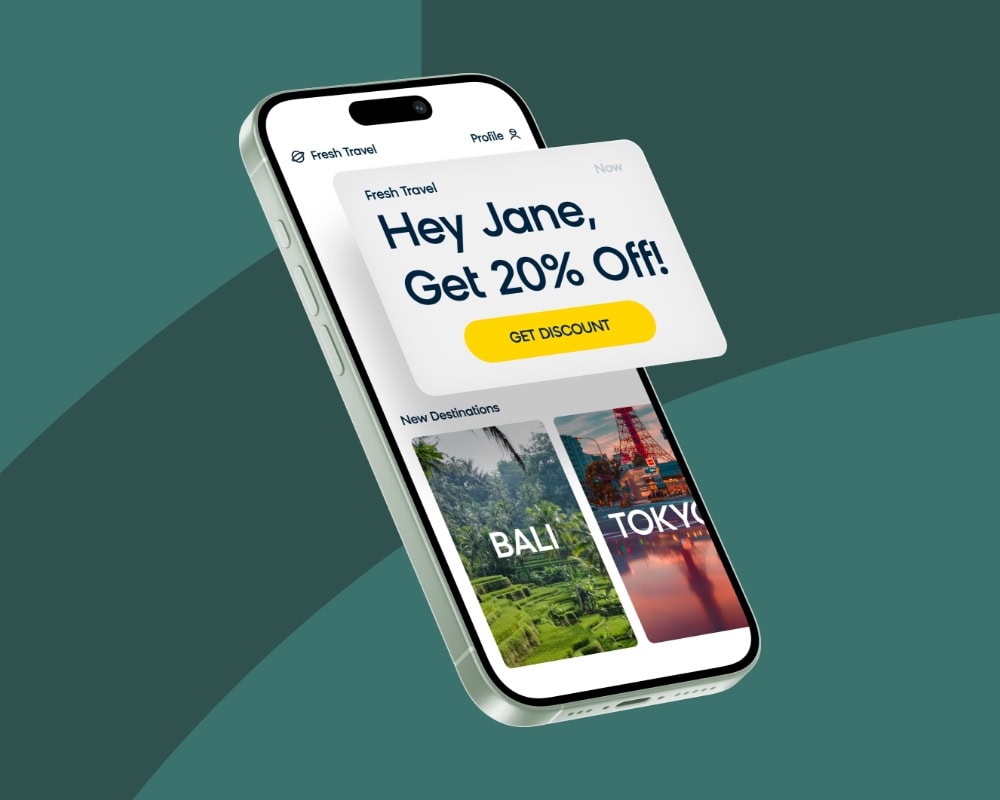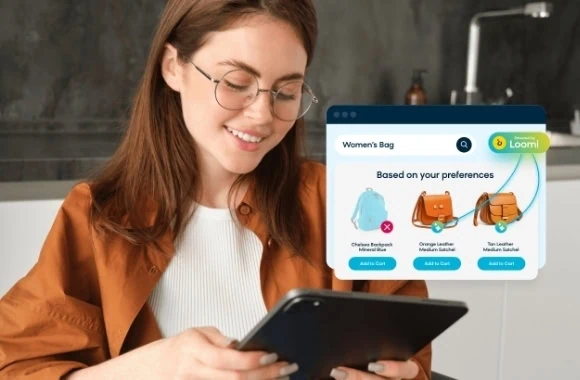The traditional email vs. SMS marketing debate misses the point entirely. Your customers don’t compartmentalize their experiences by channel — they expect seamless, intelligent communication that meets them where they are, when they’re ready to engage.
Smart marketers in 2025 ask a different question: “What’s the most intelligent way to reach this specific customer at this exact moment?” The answer lies not in picking sides, but in AI-powered orchestration that treats your marketing stack as a unified growth engine.
This evolution is already happening, with modern brands approaching email vs. SMS marketing as complementary tools in an intelligent system instead of competing channels. With advanced platforms like Bloomreach Engagement, you’re no longer forced to choose between SMS and email, but can instead execute omnichannel engagement with context-aware personalization. Let’s explore how you can do more with both email and SMS in your marketing.
Understanding Channel-Specific Strengths: Email vs. SMS Marketing Fundamentals
When evaluating email vs. SMS marketing, understanding each channel’s distinct advantages forms the foundation for any effective strategy.
Think of SMS as your brand’s most direct line to customers — it’s like having a sales associate who can tap someone on the shoulder at exactly the right moment. Its strength lies in immediacy and conciseness, making it ideal for urgent notifications, time-sensitive offers, and transactional confirmations.
SMS is great at capturing attention during high-intent moments when your customers are most likely to act. This immediacy comes with natural constraints — the 160-character limit forces concise messaging that works best for simple calls-to-action and urgent communications.
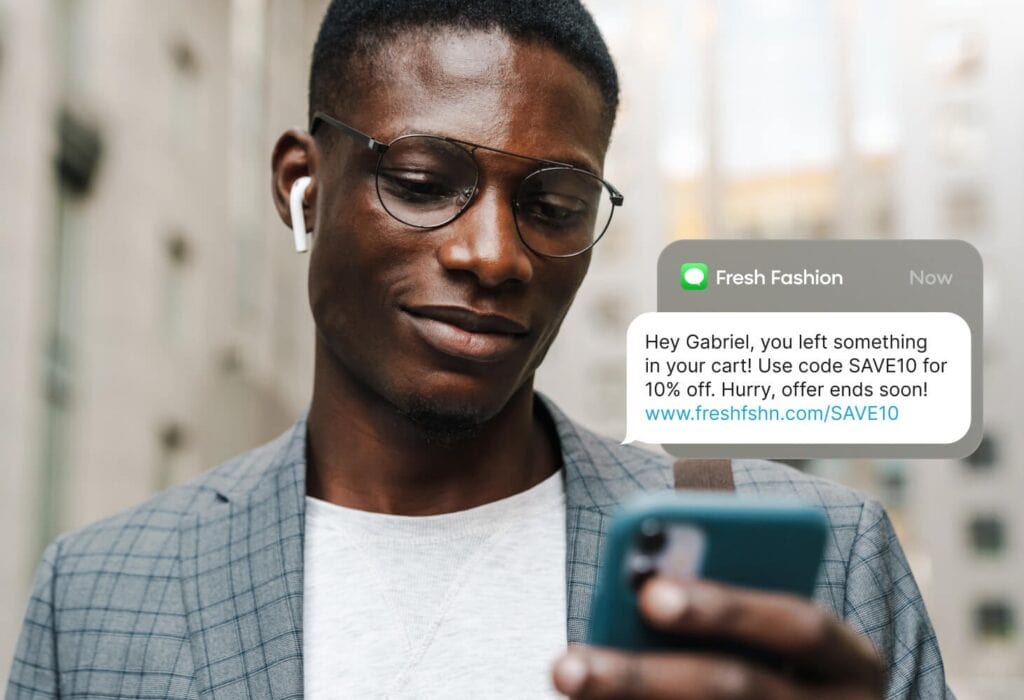
Email, on the other hand, operates as your relationship builder. Its rich formatting capabilities support detailed product presentations, brand storytelling, and complex promotional structures that would be impossible in a 160-character text. Email excels at lifecycle nurturing, educational content, and experiences that benefit from visual elements — think of it as your brand’s opportunity to create lasting impressions.
Key performance indicators that define channel effectiveness:
- SMS achieves 98% open rates with 90% of messages viewed within 3 minutes
- Email maintains 42% average open rates across industries, but supports longer-form engagement and complex messaging
- Combined approaches show significantly higher conversion rates than single-channel campaigns
The transformation happens when these channels work together like instruments in an orchestra. Bloomreach’s all-in-one platform enables AI-powered journey flows that leverage each channel’s strengths within a cohesive customer experience, rather than treating them as separate campaigns competing for attention.
Beyond Open Rates: What Actually Drives Email vs. SMS Marketing ROI
Here’s where most email vs SMS marketing comparisons go wrong: They obsess over open rates while ignoring what actually matters to your business — lifetime value, conversion rates, and customer acquisition costs.
A 98% open rate means absolutely nothing if those opens don’t drive revenue, retention, or meaningful engagement. It’s like celebrating how many people walked past your storefront while ignoring how many actually made purchases.
Bloomreach’s Loomi AI takes a fundamentally different approach. Instead of measuring channels in isolation, it analyzes behavioral signals across all touchpoints, evaluating channel performance for each customer moment rather than relying on aggregate statistics. This approach enables predictive intent scoring that optimizes for revenue, not vanity metrics.
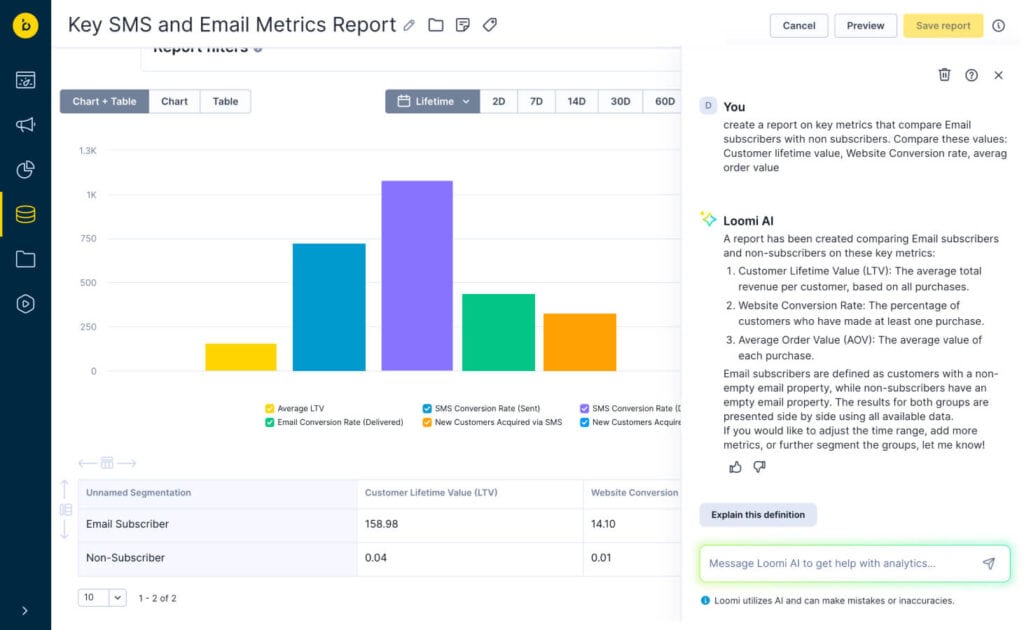
Consider the real-world impact: Successful brands achieve dramatic conversion improvements using coordinated email and SMS journeys powered by AI. Their success comes from intelligent orchestration that treats each customer as an individual with unique preferences and behaviors, not from choosing the “right” channel.
Revenue-focused metrics that actually drive growth:
- Customer lifetime value (CLV) improvement across all touchpoints
- Revenue per message across channels, not just individual opens
- Conversion rate optimization by customer segment and behavior
- Customer acquisition cost reduction through precision targeting
- Attribution across the full customer journey, not last-click attribution
The AI-Powered Solution: Autonomous Email vs. SMS Marketing Orchestration
Here’s the breakthrough insight: Autonomous marketing is here, and this approach lets AI decide, adapt, and deploy communications in real time based on customer behavior and intent, eliminating the need to choose between email vs. SMS marketing.
Autonomous marketing (driven by agentic AI) represents a fundamental shift from static campaign planning to dynamic, responsive customer engagement. Instead of manually deciding which channel to use when, AI analyzes real-time customer behavior, preferences, and context to deliver optimal messages through the most effective channels at precisely the right moments.
Think of it this way: Traditional email vs. SMS marketing is like planning a conversation weeks in advance and sticking to your script regardless of how the other person responds. Loomi AI powers real-time orchestration across email, SMS, push notifications, web personalization, and social channels based on live behavioral data — creating actual conversations with your customers at scale.
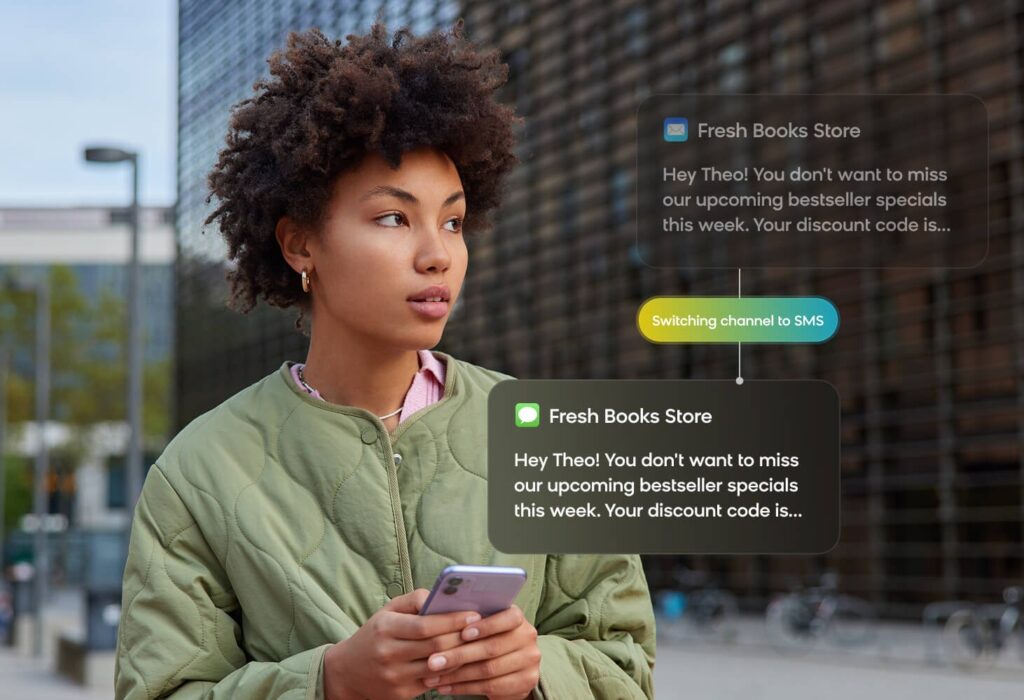
Here’s what an autonomous journey flow might consist of:
- An email welcome series that introduces your brand and products to new subscribers
- SMS promotion triggered by email engagement and browsing behavior signals high intent
- Web personalization that adjusts based on SMS response and previous interactions
- Cart abandonment triggers a cross-channel follow-up sequence optimized for that customer’s preferences
- Post-purchase remarketing optimizes channel mix based on individual customer response patterns
Single-channel campaigns operate like billboards — static and hope-driven. AI-orchestrated experiences respond dynamically to customer signals, creating conversations rather than broadcasts, relationships rather than transactions.
Platform capabilities that drive results:
- Zero-code/low-code interface enables rapid campaign deployment without IT bottlenecks
- Real-time personalization across 13+ customer touchpoints in a single platform
- Predictive audience creation based on unified customer and product data
- Automatic compliance management for global privacy regulations
- Cross-channel attribution and performance measurement that shows true ROI
Optimizing Budget and Compliance in Email vs. SMS Marketing
Let’s address the practical considerations: Email costs less per message, but SMS delivers urgency. The key is using AI to balance cost efficiency, regulatory compliance, and ROI optimization across channels without sacrificing performance.
Cost-per-message thinking leads to penny-pinching marketing decisions. While SMS typically costs more per individual message than email, the metric that actually matters to your bottom line is cost-per-acquisition and overall campaign ROI. You’re not in the business of sending cheap messages — you’re in the business of driving profitable customer relationships.
Bloomreach’s precision targeting capabilities reduce message fatigue and eliminate wasteful over-sending, even on higher-cost channels like SMS. The platform’s AI identifies optimal sending frequency and timing for each individual customer, preventing the diminishing returns that come from excessive messaging.
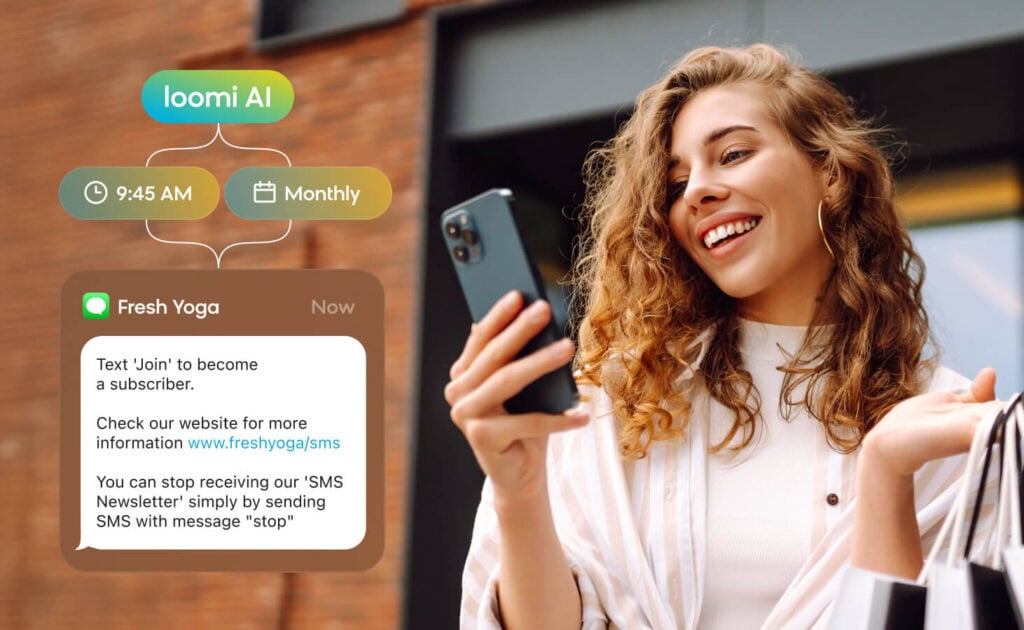
When properly targeted through AI optimization, SMS’s higher cost per message becomes irrelevant against its superior conversion rates and customer lifetime value impact. Intelligent targeting improves conversion rates and customer retention — turning what looks like an expense into a growth investment.
Additionally, regulatory compliance is critical for SMS marketing, including state laws you need to be aware of. Email has broader regulatory frameworks under GDPR and CCPA that require careful consent management as well.
Bloomreach’s built-in global compliance features address GDPR, CCPA, and TCPA requirements automatically, handling consent management and regulatory requirements without excessive manual oversight from your team. This automation eliminates the compliance complexity that often prevents businesses from fully leveraging SMS marketing potential.
Real-World Success Stories: Email vs. SMS Marketing Integration
The data is clear: coordinated communication consistently outperforms channel-specific strategies across industries, with AI-powered orchestration driving measurable improvements in conversion and customer lifetime value.
boohooMAN Sees Up to 25x ROI From SMS
Fashion brand boohooMAN was primarily using SMS to send one-off messages to customers, but found that these generic messages weren’t quite hitting the mark. That’s why the brand turned to Bloomreach Engagement in order to incorporate SMS into a broader omnichannel strategy.
boohooMAN was able to get a unified view of its customers, resulting in better segmentation and more personalized messaging. Thanks to its new customer-centric approach, boohooMAN saw an incredible 5x overall ROI with SMS, as well as a 25x ROI for an SMS birthday campaign, proving how effective SMS can be when integrated into a larger strategy.
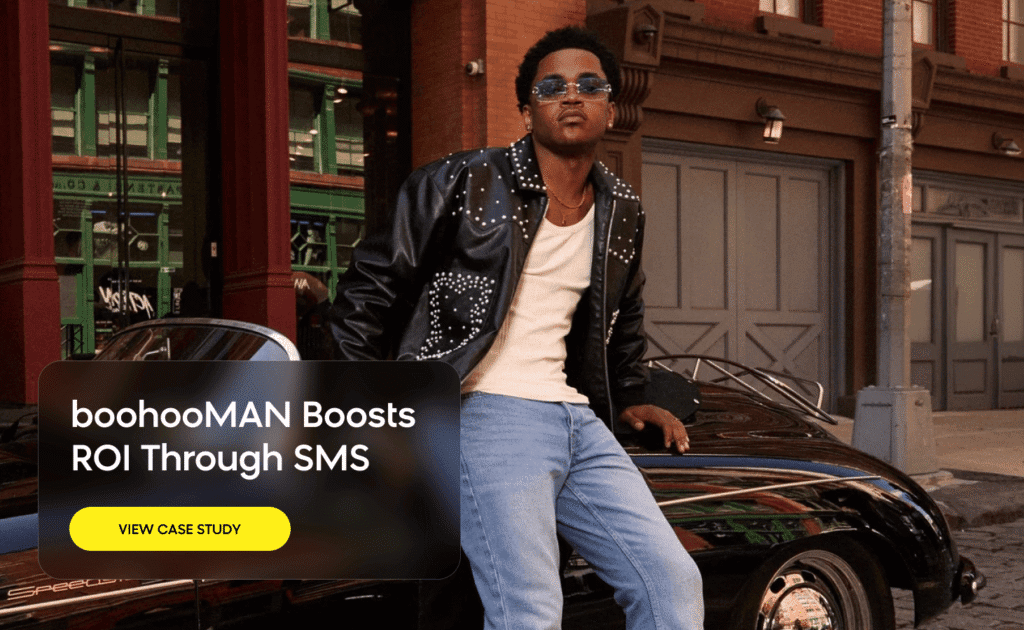
Notino Expands Its Omnichannel Approach
Beauty specialist retailer Notino wanted to integrate multiple touchpoints in order to better personalize their campaigns. The brand knew that with the right data, it could transform its marketing to be more cohesive across channels.
With Bloomreach Engagement, Notino was able to unify all its customer data into a single customer view. Then, it could activate that data across email, SMS, mobile push, and remarketing ad campaigns.
The omnichannel approach paid off, with SMS, Notino’s most recently added channel, driving 11% of all orders during Black Friday and accounting for 58% of redeemed codes during an in-store event.

Mayborn Group Combines Email and SMS for Big Results
Mayborn Group, the owner of baby brand Tommee Tippee®, wanted to add SMS as a new channel in its marketing strategy. However, the brand knew it wouldn’t be effective to simply add a channel and treat it as a separate workflow — the channel would need to be incorporated with its other channels.
By turning to Bloomreach Engagement, Mayborn Group was able to easily test the effectiveness of this new channel, comparing an SMS + email group to an email-only group of customers.
The results were clear: Customers who received both SMS and email messaging had an impressive 126.9% higher conversion rate than those who only received emails. What’s more, a Black Friday SMS campaign drove a staggering 7,433% ROI, showing that a cross-channel strategy can pay off big.
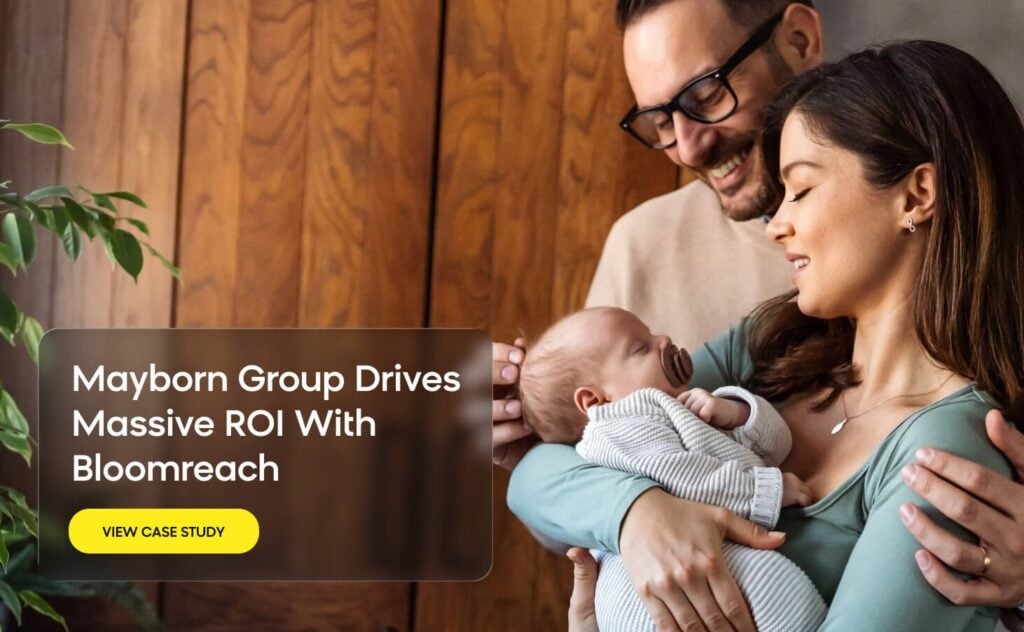
The Future of Marketing: Intelligence Over Channel Selection
The choice between SMS and email marketing represents outdated thinking that doesn’t serve modern customer expectations or business objectives. Your customers expect better, and intelligent marketing strategies are already delivering it.
Smart marketing in 2025 prioritizes intelligence over channel selection. Bloomreach’s AI-powered orchestration improves customer experience, operational efficiency, and revenue generation simultaneously — at scale, without requiring you to choose between the immediacy of SMS and the richness of email.
Why does this transformation matter now?:
- Customer expectations have evolved beyond simple promotional messaging
- AI technology enables real-time personalization that was impossible just years ago
- Competitive pressure rewards brands that deliver superior customer experiences
- Revenue growth requires a sophisticated understanding of customer journey complexity
It’s clear that it’s no longer about email vs. SMS marketing — it’s about creating customer experiences that drive growth. Ready to move beyond the email vs SMS marketing debate? Schedule a personalized demo today to see how AI-powered omnichannel marketing can transform your customer engagement strategy and drive measurable business results.
Frequently Asked Questions: Email vs. SMS Marketing
Is SMS better than email for ROI?
SMS typically delivers approximately $71 ROI per $1 spent compared to email’s $36 ROI per $1 spent. However, the real opportunity lies in AI-orchestrated campaigns that often outperform either channel individually by optimizing message timing, content, and channel selection for each customer rather than treating email vs. SMS marketing as a zero-sum choice.
When should I use SMS vs. email in my marketing strategy?
SMS excels for urgency-driven messages, mobile-specific triggers, and time-sensitive communications like flash sales or shipping notifications. Email works better for brand storytelling, complex product presentations, and lifecycle nurturing campaigns that require rich content. The most effective approach uses AI-powered platforms to make these decisions automatically based on customer behavior and preferences rather than forcing you to choose.
How much more expensive is SMS than email marketing?
While SMS costs more per individual message than email, this metric misses the bigger picture. Bloomreach reduces cost-per-conversion through precision targeting that eliminates wasteful sending and optimizes for business outcomes rather than message volume, often making SMS more cost-effective when measured by revenue impact.
What are the legal differences between SMS and email marketing?
SMS requires explicit opt-in consent under regulations like TCPA, while email has broader regulatory frameworks under GDPR and CCPA. Bloomreach maintains full compliance across all channels automatically, ensuring you can easily handle consent management and regulatory requirements.
Can I combine email and SMS in one marketing campaign?
Absolutely — and you should. Bloomreach enables unified orchestration that coordinates SMS and email based on customer behavior and preferences rather than predetermined sequences. This approach moves beyond the email vs. SMS marketing debate to create cohesive experiences that leverage each channel’s strengths within integrated customer journeys.
